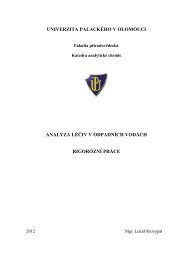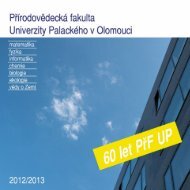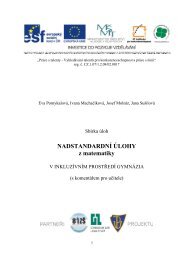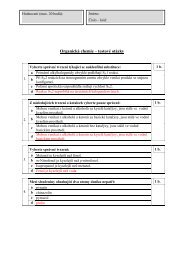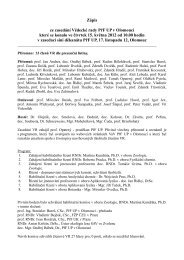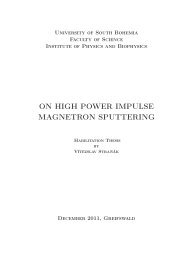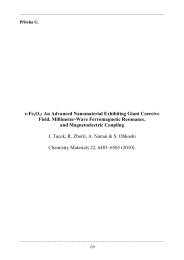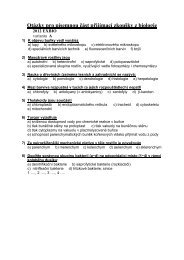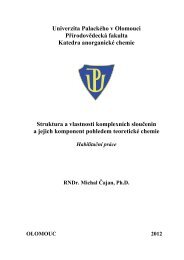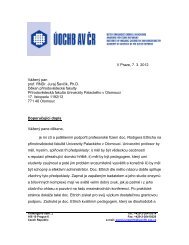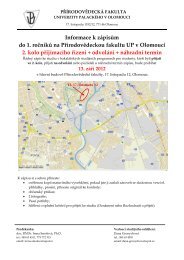A comparative structural analysis of direct and indirect shoot ...
A comparative structural analysis of direct and indirect shoot ...
A comparative structural analysis of direct and indirect shoot ...
Create successful ePaper yourself
Turn your PDF publications into a flip-book with our unique Google optimized e-Paper software.
Shoot regeneration in opium poppy<br />
283<br />
Results<br />
Shoot regeneration was initiated from hypocotyls <strong>of</strong> primary<br />
somatic embryos (Fig. 1 a). The emerging <strong>shoot</strong> primordia<br />
appeared on the hypocotyl surface <strong>of</strong> the somatic embryo<br />
hypocotyl, but they did not disrupt the surface tissues (Fig.<br />
1 b). In addition, no general tissue reorganisation was observed<br />
(Fig. 1b). Due to these features, this kind <strong>of</strong> regeneration<br />
was termed <strong>direct</strong> <strong>shoot</strong> organogenesis in this study.<br />
In<strong>direct</strong> <strong>shoot</strong> regeneration involved tissue dedifferentiation,<br />
callus formation, <strong>and</strong> cell re-differentiation leading to de novo<br />
<strong>shoot</strong> regeneration (Fig. 1 c). Tissue organisation <strong>and</strong> cell<br />
morphogenesis <strong>of</strong> in<strong>direct</strong>ly regenerated <strong>shoot</strong> primordia were<br />
completely different in comparison to underlying callus tissue<br />
(Fig.1d).<br />
Direct <strong>shoot</strong> regeneration<br />
Surface integrity <strong>of</strong> the embryo hypocotyl suggested that adventitious<br />
<strong>shoot</strong>s arose from superficial cell layers (Fig. 1 b).<br />
Initially, sub-epidermal cells were activated <strong>and</strong> divided. The<br />
plane <strong>of</strong> the first cell division seemed to be anticlinal (Fig.<br />
2 a), but subsequent cell divisions were observed in both anti-<br />
<strong>and</strong> periclinal planes (Fig. 2 b). Afterwards, dividing subepidermal<br />
<strong>and</strong> epidermal cells created organogenic nodules,<br />
the first recognisable structures on the hypocotyl surface<br />
(Figs. 2 c, d). The two most important morphogenetic features<br />
<strong>of</strong> these cells were dense non-vacuolated cytoplasm (Figs.<br />
2 a, b, c) <strong>and</strong> reduced cell size (Fig. 2 d).<br />
The first apparent indication <strong>of</strong> cell specification was observed<br />
in the phase <strong>of</strong> apical meristem formation. The cells<br />
within nodule apices adopted tunica-corpus zonation (Figs.<br />
2 e, f). The original epidermal cells participated in differentiation<br />
<strong>of</strong> the tunica layer (Fig. 2 c). This explains why the tunica<br />
<strong>and</strong> protomeristem maintained morphological <strong>and</strong> histological<br />
continuity between the forthcoming buds <strong>and</strong> the remaining<br />
hypocotyl surface (Figs. 1b, 2 c, d, g). Cell specialisation<br />
continued by both histodifferentiation <strong>of</strong> the <strong>shoot</strong> apical meristem<br />
(Figs. 2 e, f) <strong>and</strong> transformation <strong>of</strong> organogenic nodules<br />
into buds (Figs. 2 g, h). Adventitious buds were visible on<br />
the hypocotyl surface (Figs. 2 g, h) <strong>and</strong> regular activity <strong>of</strong> the<br />
apical meristem was detected, including formation <strong>and</strong> growth<br />
<strong>of</strong> leaf primordia (Figs. 2 h, i).<br />
In<strong>direct</strong> <strong>shoot</strong> regeneration<br />
Distinct mode <strong>of</strong> in<strong>direct</strong> induction <strong>of</strong> organogenesis was<br />
based on callus production. Cell activation triggered a morphogenetic<br />
switch in some cells within rarely dividing callus<br />
tissue, resulting in the establishment <strong>of</strong> dividing, meristemlike,<br />
<strong>and</strong> <strong>shoot</strong>-forming tissue (Fig. 3 a). Typical features <strong>of</strong><br />
meristemoids (representing population <strong>of</strong> competent cells)<br />
were small cell size, cytoplasmic density, minimal vacuolation<br />
(Figs. 3 a, b), <strong>and</strong> cell adhesion after cell division (Figs. 1 d,<br />
3 a, b, c). The first cell differentiation events within the multicellular<br />
meristemoids resulted in the formation <strong>of</strong> both peripheral<br />
<strong>and</strong> central cell layers, with only peripheral cells continuing<br />
their divisions (Fig. 3 b). Reserves were stored in central<br />
cells in the form <strong>of</strong> starch (Figs. 3 b, d) <strong>and</strong> lipids (Figs. 3 e, f).<br />
These cells were non-dividing but their cytological parameters<br />
indicated high metabolic activity. Frequent endo- <strong>and</strong><br />
exocytosis in these cells (Fig. 3 e) <strong>and</strong> cell wall ingrowth for-<br />
Figure 1. Shoot buds regenerated in the callus culture <strong>of</strong> P.<br />
somniferum L. a. Somatic embryo (SE) in the culture where<br />
the <strong>shoot</strong> (SH) regeneration from the hypocotyl was<br />
induced. Bar = 1 mm. b. Directly regenerated <strong>shoot</strong>s with<br />
leaf primordia, visible as protuberances on the hypocotyl<br />
surface <strong>of</strong> somatic embryo. Bar = 100 µm. c. Shoot bud<br />
regenerated in the organogenic callus culture. The white<br />
compact tissue represents meristemoids. Bar = 1 mm. d.<br />
Shoot primordium on the surface <strong>of</strong> callus tissue. Bar =<br />
100 µm.




